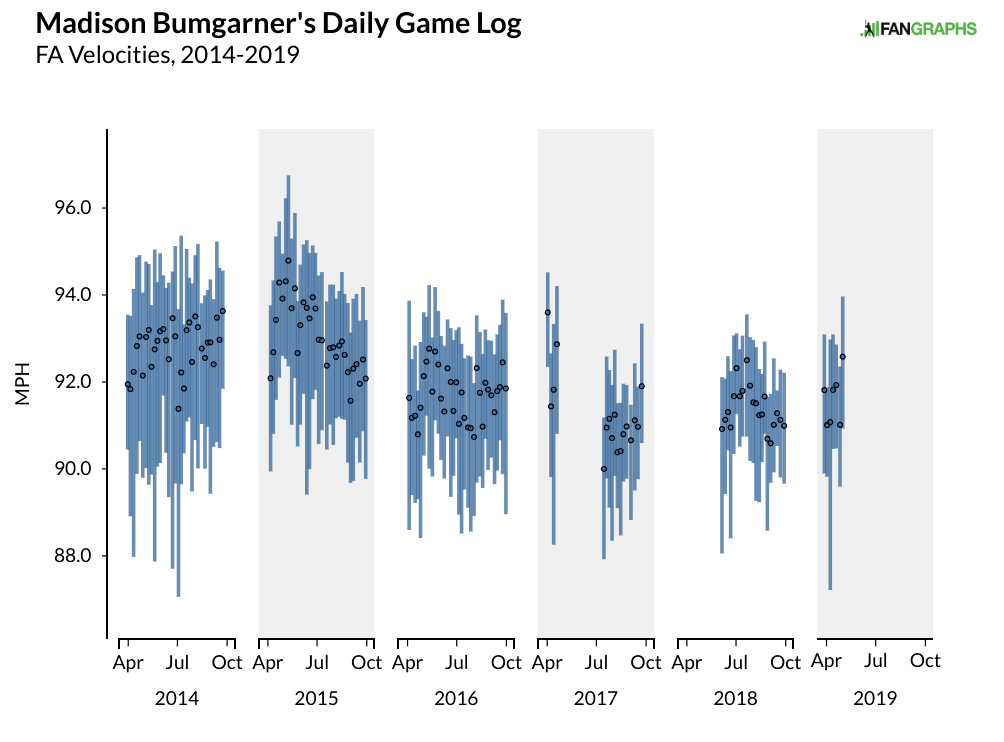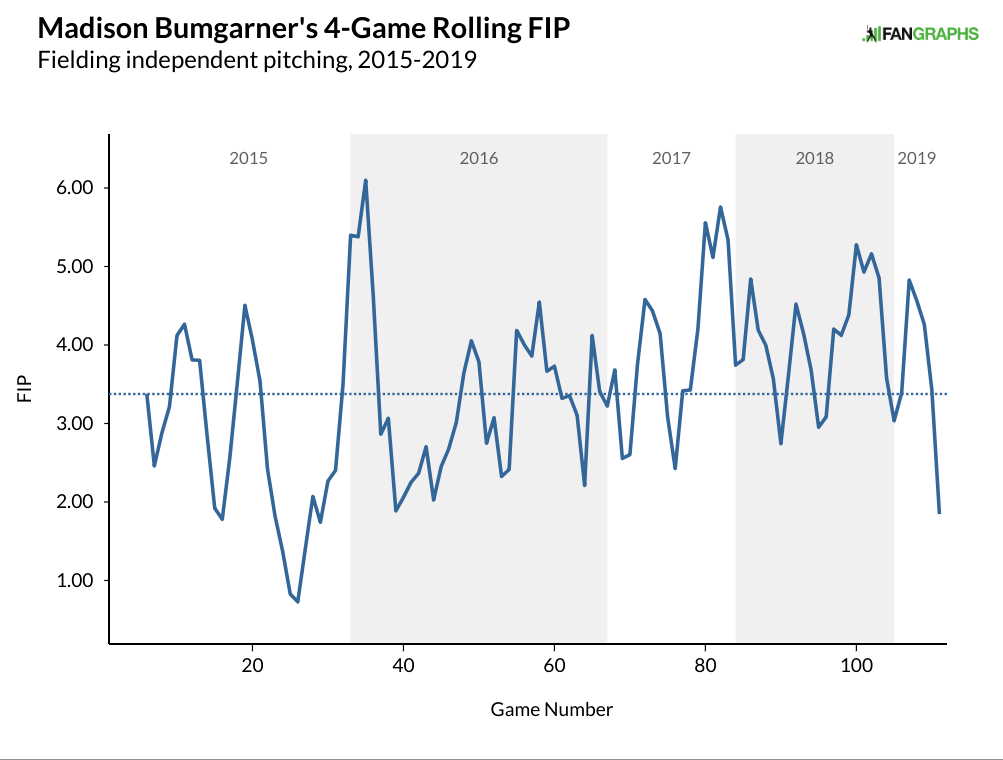Sunday was a rollecoaster for Reds righty Luis Castillo. At Great American Ballpark, he needed just 32 pitches to set the Giants’ starting nine down in order for the first time, faced the minimum number of hitters through five innings, and didn’t allow his first hit until he’d gotten one out into the sixth — all while staked to a four-run lead. Before he could escape the frame, however, he allowed a walk and two other hits, including a game-tying three-run homer by Buster Posey. Given that he’d thrown just 81 pitches to that point, manager David Bell sent him back out for the seventh. He put up a zero, and left with the game tied, but the Reds lost, 6-5. Bummer.
The outing cost Castillo his lead atop an NL ERA leaderboard that at first blush appears to be drunk, with guys like Kyle Freeland (5.90 ERA),Yu Darvish (5.79), Aaron Nola (5.06), and Noah Syndergaard (5.02, even after Thursday’s heroics) stumbling along while Zach Davies (1.56), Castillo (1.97, up from 1.45 after his previous start), Caleb Smith (2.00) and Jordan Lyles (2.20) shine.
A closer look at the 26-year-old Dominican’s numbers shows that his spot there is no fluke. Castillo has shaken off last year’s sophomore slump with a performance reminiscent of his tantalizing 15-start rookie season from 2017, asserting his spot among the majors’ upper echelon of starters. Prior to Sunday, he hadn’t allowed more than two runs in any start this season, a performance that earned him NL Pitcher of the Month honors for April. In 50.1 innings though Sunday, he’s second in ERA, strikeouts (59), groundball rate (57.8%), and WAR (1.4), fourth in strikeout rate (30.3%), fifth in home run rate (0.54 per nine), and sixth in FIP (2.89).
Recall that Castillo, who was originally signed out of the Dominican Republic by the Giants in 2011, and traded to the Marlins in 2014 and the Reds in 2016, was effectively treated as a lottery ticket in deals that respectively sent Casey McGehee and Dan Straily the other way. He was also dealt to the Padres and back again in a mid-2016 pair of trades that centered around whether San Diego had been forthcoming regarding Colin Rea’s elbow issues.
Though renowned for a fastball that could reach 101 mph, he cracked only one major prospect list, placing 94th on that of ESPN’s Keith Law in the spring of 2017. Law graded his changeup as plus but noted that his third pitch was a fringy slider. Baseball America, which placed him second on its Marlins list that same spring but still shy of its Top 100, praised his easy velocity, projected his slider as above-average, and noted that “he has a feel for a power changeup, but he’s still finding the right grip. It has the potential to be an average pitch as well.” Our own Eric Longenhagen, who had Castillo 10th on Cincinnati’s 2017 list, described the slider as flashing plus and the changeup as ” below average but there’s good arm speed here (that should be obvious, this guy bumps 100) and it could get to average with reps.”
Read the rest of this entry »


